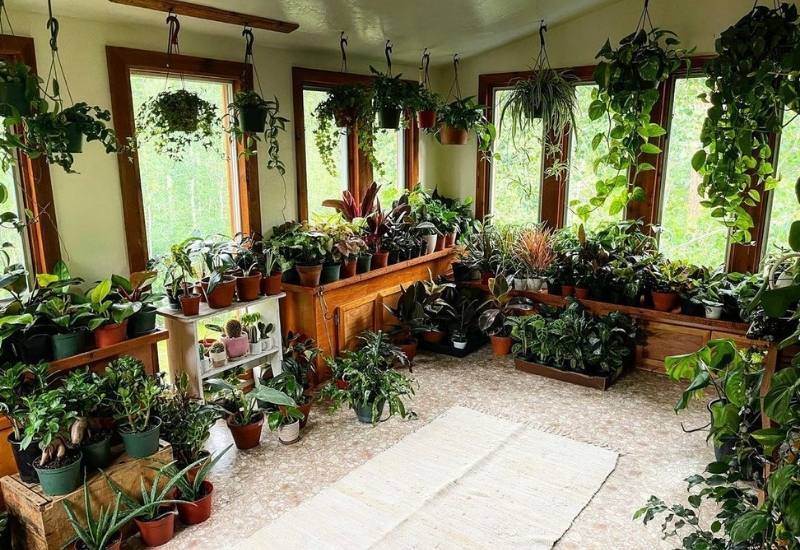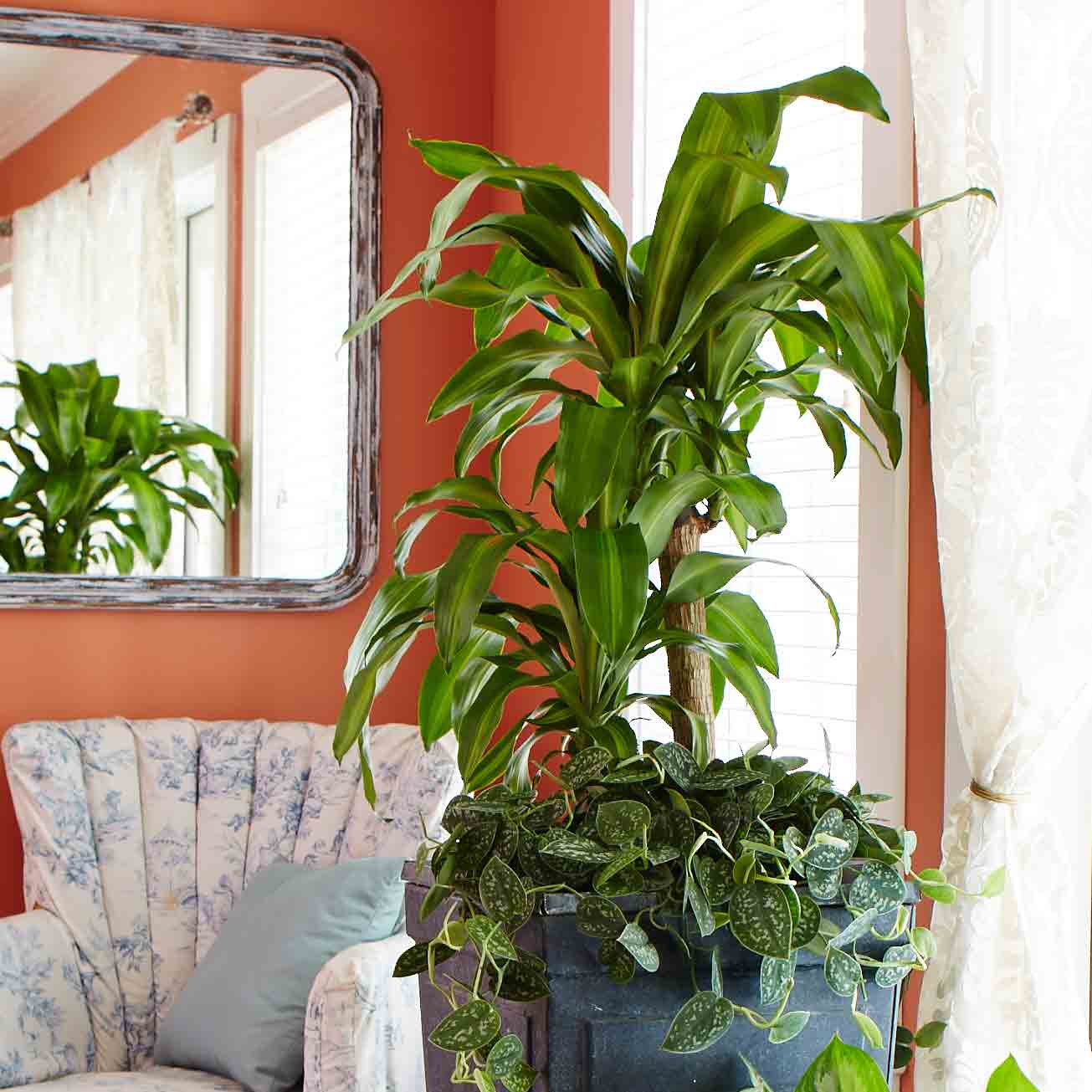Best Low-Light Indoor Plants That Thrive with Minimal Sunlight
Best Low-Light Indoor Plants That Thrive with Minimal Sunlight
Blog Article
Discover the Unique Benefits of Low-Light Indoor Plants for Your Living Room
Incorporating low-light indoor plants into your living area uses a multitude of benefits that prolong much past plain looks. These durable plants not just flourish in environments with restricted sunlight however likewise offer critical functions such as air purification and humidity enhancement. They can favorably affect your state of mind and total wellness while needing very little maintenance. As you think about the transformative capacity of these plants, it becomes vital to check out how their unique characteristics can tailor your setting to far better serve your lifestyle. What specific benefits might reverberate most with your personal space?
Air Filtration Advantages
Low-light indoor plants not only enhance the aesthetic allure of living rooms yet likewise play a substantial duty in air filtration. Study has actually shown that specific plant species can effectively get rid of typical interior contaminants, including benzene, trichloroethylene, and formaldehyde. These substances commonly rise from family items such as furniture, cleansing products, and building products, contributing to interior air quality concerns.
Plants such as the serpent plant, pothos, and peace lily are particularly adept at filtering system dangerous substances from the air while prospering in low-light problems. The process of phytoremediation, wherein plants take in and metabolize contaminants, enables these species to contribute dramatically to a much healthier indoor atmosphere. Additionally, with photosynthesis, plants launch oxygen, better boosting air quality.
Integrating low-light indoor plants into office or home rooms not just provides aesthetic benefits but likewise acts as a functional approach for boosting air top quality. By picking the right species, individuals can create an atmosphere that promotes wellness and minimizes direct exposure to dangerous toxins, making these plants an essential element in modern-day interior living.
:max_bytes(150000):strip_icc()/lowlightplants01-e6ce112597f74b538fc83e28a39bf23b.jpg)
Mood Enhancement Effects
Various research studies have shown that incorporating indoor plants can considerably improve mood and overall psychological well-being. The presence of plant in interior settings has actually been connected to reduced stress levels, increased sensations of peace, and enhanced emotional wellness. Low-light interior plants, in specific, flourish in environments where all-natural light is limited, making them perfect for numerous living areas.
Research shows that engaging with plants can promote the release of serotonin, a natural chemical related to sensations of joy and wellness. Additionally, the act of looking after plants promotes a sense of duty and achievement, further adding to positive psychological health and wellness outcomes. Low-light plants such as serpent plants, pothos, and peace lilies have actually been shown to enhance air high quality, which is inherently connected to mood improvement.
Including these plants into your office or home can develop a calm environment, providing a aesthetic and sensory getaway from the pressure of life - Best low-light indoor plants. As people spend boosting amounts of time inside your home, the mood-enhancing impacts of low-light interior plants become a lot more essential, providing not only visual allure yet likewise an extensive influence on psychological well-being
Low Maintenance Demands
For those looking for to boost their indoor spaces without a significant time commitment, low-light indoor plants are an excellent choice due to their low maintenance requirements. These resilient plants thrive in less-than-ideal lighting conditions, making them perfect for homes and offices where natural sunshine is restricted.

Pest resistance is another advantage of low-light indoor plants. Numerous varieties are much less at risk to typical insects, reducing the demand for consistent tracking and treatment. Furthermore, these plants usually grow more slowly than their high-light equivalents, implying less constant repotting and trimming are needed.
Aesthetic Allure and Flexibility

Additionally, these plants can be organized in myriad methods, whether in groups for a rich impact or as standalone functions to draw the eye. The choices of planter styles-- from sleek ceramic pots to rustic wood containers-- better boost their visual value, allowing house owners to share their individual design.
Furthermore, low-light plants can be strategically placed in locations that might otherwise feel neglected, such as corners or dimly lit racks, therefore optimizing their ornamental capacity. Ultimately, the mix of their striking look and flexibility makes low-light interior plants a beneficial enhancement to any home, producing an inviting ambience that promotes health and relaxation.
Improved Moisture Levels
Enhancing interior moisture levels is just one of the considerable advantages of including low-light indoor plants into living areas. These plants naturally release dampness vapor with a procedure called transpiration, which takes place when water absorbed by the origins relocates with the plant and vaporizes from the leaves. This process not only raises humidity however also contributes to a much healthier indoor atmosphere.
Better humidity levels can relieve various health and wellness concerns, such as dry skin, find out here now breathing troubles, and allergies. Numerous individuals experience pain in dry interior conditions, especially throughout winter season when heater are in use. By tactically putting low-light plants throughout your home, you can develop an extra balanced humidity level that promotes general wellness.
Moreover, certain low-light indoor plants, like peace lilies and spider plants, are particularly effective at increasing humidity (Best low-light indoor plants). Thus, low-light indoor plants offer both visual and useful objectives, advertising a healthier atmosphere.
Conclusion
In recap, low-light interior plants use countless advantages that add to a much healthier and much this contact form more inviting living area. Their capability to purify the air, enhance mood, and improve humidity levels emphasizes their value as efficient decoration elements. Additionally, their reduced upkeep needs and aesthetic adaptability make them ideal for numerous settings. Integrating these resilient plants right into indoor settings not just boosts the atmosphere but additionally promotes overall health, developing a tranquil haven for residents.
Plants such as the snake plant, pothos, and tranquility lily are specifically skilled at filtering harmful materials from the air while growing in low-light conditions. Low-light plants such as serpent plants, pothos, and peace lilies have been revealed to improve air high quality, which is inherently linked to state of mind improvement.
Low-light indoor plants, such as snake plants, pothos, and ZZ plants, not just boost the visual landscape of a room but likewise present various textures and tones of eco-friendly that can enhance diverse indoor designs. These plants naturally launch moisture vapor with a procedure known as transpiration, which takes place when water taken in by the roots moves through the plant and evaporates from the fallen leaves.Furthermore, certain low-light interior plants, like peace lilies and spider plants, are especially effective at increasing moisture.
Report this page